Missing teeth should always be replaced to avoid the following consequences:
Loss of chewing function:
Losing teeth significantly affects your ability to chew and eat your favorite foods. Often, people change to softer diet or avoid chewing on one side or the other to compensate for this loss.
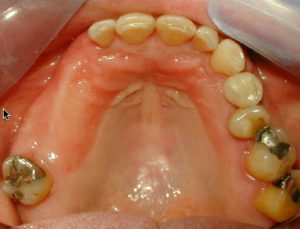
Poor aesthetics and smile:
Tooth loss, especially in the upper front area of your mouth also known as the smile or aesthetic zone, compromises your smile. People with missing teeth or aesthetically unpleasing teeth often cover their mouth when talking or smiling. It can also affect one’s speaking.
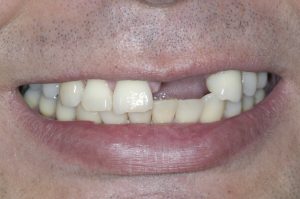
Damage to adjacent teeth:
Following teeth loss, the remaining teeth have to carry the ‘load’ during your chewing. The excessive forces can result in chipping, fractures, or potential gum disease with loss of bone. Once the bite has been compromised by tooth loss, it becomes increasingly worse as the other teeth suffer such damage and begin to shift.
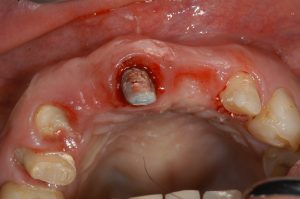
Bone loss:
Following tooth loss, the supporting jaw bone undergoes significant remodeling and shrinkage. This will result in defects that are unsightly, difficult to clean, and difficult to correct later. This can easily be prevented by replacing the missing teeth with implants early.
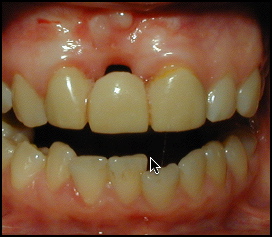
Shifting of other teeth
Tooth loss causes shifting or moving of adjacent and opposing teeth. The back teeth begin to tilt forward and the opposing teeth start shifting up or down. All of this results in malocclusion (poor bite), increase in teeth fractures and increased bone loss (periodontal disease). Once teeth have shifted, correction is difficult and costly. It is best to replace missing teeth before such changes occur.
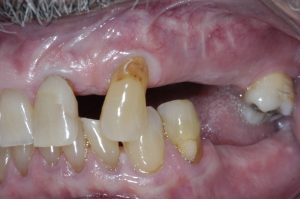
Loss of facial balance and support:
Loss of many teeth in the back results in ‘bite collapse’. The jaw then over closes putting more pressure on the front teeth causing them to flare out. Facial wrinkles develop around the mouth and the lips start to pouch outward (This is the classic tooth-less aging person look). Some people also begin to develop facial pain and TMJ problems. These are serious permanent changes which can be easily prevented by replacing missing teeth in a timely fashion.

Loss of self-esteem and social comfort:
Having a healthy mouth and nice smile greatly contributes to one’s sense of self-esteem and comfort in social settings. We have met many patients whose lives greatly suffered from oral health negligence. Overall quality of life is enhanced with replacement of teeth that look, feel and function like natural teeth.

Problems If Teeth Are Not Replaced:
Poor chewing function:
Losing teeth greatly affects what you can eat, your nutrition, and overall health.
Aesthetics issues:
Teeth loss result in poor aesthetics and compromise of your smile.
Damage to adjacent teeth:
When teeth are lost or removed, not only does the bone resorb (see section on Bone Resorption), but the surrounding teeth begin to drift into the gap created by the missing tooth/teeth. This results in problems with the gums and how the teeth fit together and function (occlusion) and eventually problems with joint pain. In addition, when posterior teeth are lost, pressure is placed on the front teeth, which can cause them to splay out.
Unfortunately, attempting to replace teeth with either bridges or removable partials also compromises the health of the adjacent teeth as follows:
When teeth are cut down into pegs for bridges, the enamel is removed, leaving the spongy layer of tooth structure called the dentin. Over time, the cement retaining the bridge washes out and bacteria can seep under the bridge and decay the dentin fairly quickly. This leads to failure of the bridge and possible root canals if the decay reaches the nerve.
In addition, these teeth now bear the forces that should normally be placed on three teeth, which further weakens the structure of these teeth. It’s rather like knocking one of the supports out from under the Golden Gate Bridge and expecting the other supports to bear the entire weight. It would simply fail as the other supports break down over time.
Most importantly, once the teeth are cut down for a bridge, the tooth structure can never be replaced; the long term health of the teeth is compromised and this usually results in additional treatment over time, which can be extensive and costly.
When teeth are replaced with a removable partial denture, the bone resorption is accelerated and the pressure that the partial puts on the teeth that it is hooked onto begin to loosen. Over time, the pressure can eventually torque these teeth out completely.
If this happens, the partial must be made larger to incorporate the additional missing teeth/tooth, and it is now hooked onto other teeth than can be lost with continued pressure from the partial.
Loss of jaw bone:
Natural tooth roots are embedded in the jawbone, providing a stable foundation that allows the teeth to function properly. When teeth are lost or extracted, the bone that previously supported those teeth no longer serves a purpose and begins to deteriorate, or resorb. Bone loss can occur immediately, as in the smile zone, and continue up to 12 months.
How to prevent bone loss?
Dental implants are substitute tooth roots, providing the same function as natural tooth roots (see diagram), including stimulating the bone, thereby preserving it and preventing the bone loss that would normally occur with tooth loss. The jawbone actually forms a bond with the dental implants, creating a stable foundation for replacement teeth that look, feel and function like natural teeth.
Problems with loss of front teeth:
When you lose a tooth in the front of your mouth, where the bone is very thin, the bone will usually melt away rather quickly, giving the appearance that the bone and gums are caving in, or collapsing. Very often, this defect is visible when smiling.
If you replace a front tooth with a tooth supported bridge, eventually the replacement tooth looks like a false tooth as the gums and bone above it begin to collapse, leaving the tooth hanging, or suspended without support. When a tooth is replaced with an implant supported crown, the implant functions like a natural tooth root and preserves the bone, preventing the defect in the bone that would normally occur with tooth loss.
Problems with loss of back teeth:
When all of your posterior teeth are missing, the back of your mouth actually collapses as the bone deteriorates. The teeth in the front of your mouth begin to flare out as the bite collapses and the corners of your mouth droop. Your appearance begins to change as the height of the jaw decreases.
If your posterior teeth are replaced with a partial denture, the bone resorption process is accelerated as the partial presses down on the gums and underlying bone as you eat. Replacing your posterior teeth with implant supported bridges preserves the bone, preventing the bone deterioration that leads to bite collapse, which occurs when teeth are missing.








